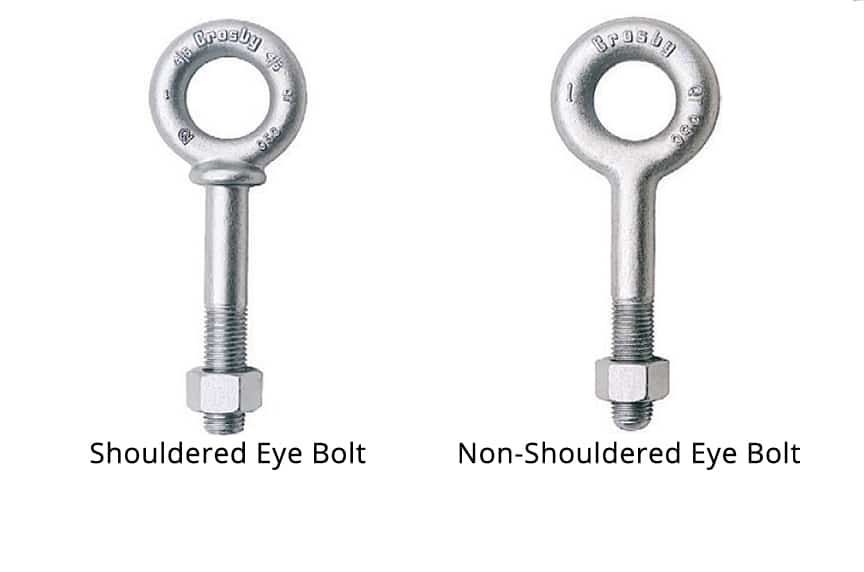One of the most basic but often misapplied rigging tools are eye bolts. While selecting and installing eye bolts, there are a few things to keep in mind. Even when lifting something as simple as a box, a swivel eye bolt used incorrectly might cause serious injury or death.
How to Choose the Right Bolt
Don’t forget to make use of the eye bolt that has its maximum load capacity imprinted on it. Thread size is often printed on the eye bolt swivel ring instead of load ratings. You need to choose an eyebolt that is suitable for the lift you want to do, both in terms of kind and capacity.
For vertical loads only, use simple or normal eye bolts (non-shoulder) or ring bolts. All bolts that aren’t in the shoulder will flex or break under angular stress.
For loading at an angle or in the vertical plane, use shoulder eye bolts. Keep in mind that the safe load drops significantly while lifting eye bolts at an angle.
When loading an angle, use the technique suggested by the manufacturer.
If you need to use swivel lifting eyes, be sure it can endure the conditions of its new home (e.g., corrosion, extreme weather, etc.)
Shouldered and Non-Shouldered Bolts
Whether or whether you need a shouldered eye bolt is the first thing to think about.
In contrast to eye bolts with shoulders, non-shouldered eye bolts can only be used for lifting in a straight up and down orientation. Shouldered eye bolts are required for any lifting that involves an angular weight or hoisting with slings at an angle. Shouldered eye bolts may be useful, but they still need appropriate installation before any angular stress can be applied. Shouldered eye bolts may only be utilized for vertical lifts if the shoulder is not totally flush.
Sling Angle
The eye bolt’s capacity decreases dramatically as the sling angle decreases, resulting in increased stress on the eye bolt. Riggers must have a thorough comprehension of this phenomenon in order to choose the appropriate eye bolt for their lift.
By way of illustration, if you’re lifting something heavy and your sling angle is just 30 degrees, the stress on your swivel lifting eye bolts will equal double your load’s weight. Also, the eye bolt’s strength is now just 25% of what it was before. Some brands of eye bolts are not meant to be used at an angle lower than 45 degrees. Overloading an eye bolt increases the danger of losing the load or destroying the equipment if the rigger does not account for both the increased stress and the reduced capacity.
The density of Material and Thread Strength
Finally, the strength and thickness of the material that the eye bolt will be inserted into are crucial factors in the correct use of a lifting ring eye bolt. The material into which the eye bolt is being installed must be strong enough to withstand the loads expected during the lift, even if the eye bolt itself is of the right design and capacity. Make sure the weight can be lifted safely by inspecting the designs or speaking with an engineer to determine the optimal number and placement of pick points.











But wanna say that this really is quite helpful Thanks for taking your time to write this.
Definitely what a great blog and instructive posts I definitely will bookmark your site.All the Best!
Good post! We will be linking to this particularly great post on our site. Keep up the great writing
Comments are closed.